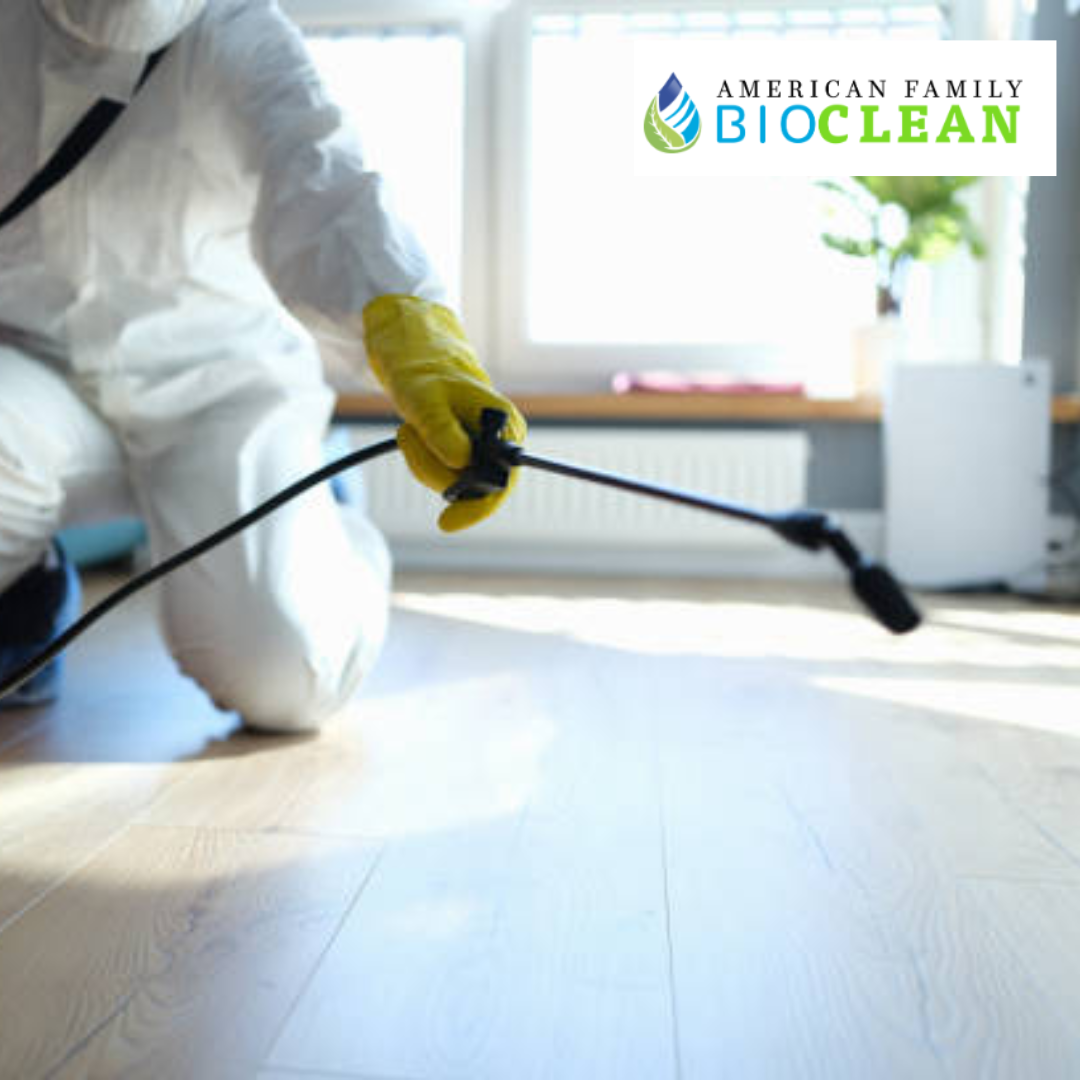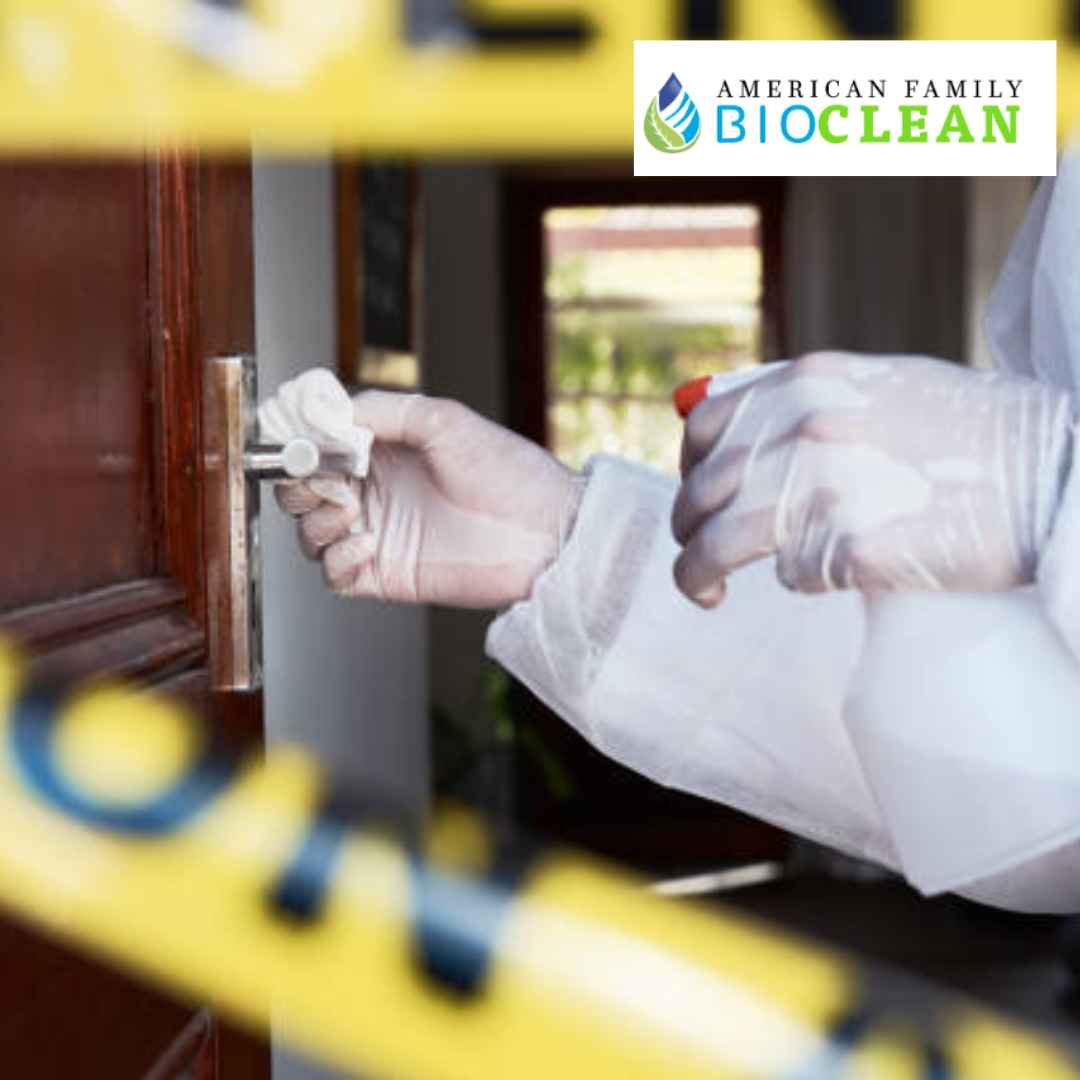Restoring Safety and Sanitation after an Unattended Death: Essential Steps to Take
Lakeland, United States - May 6, 2025 / Moving Service Marketing Company /
Dealing with the aftermath of an unattended death is never easy and often brings unexpected challenges. Beyond the emotional weight, serious health and safety concerns must be addressed immediately. Biohazards like blood, bodily fluids, and decomposition can pose significant risks if not properly cleaned and sanitized. Acting quickly and following the right steps is essential to protect those entering the space and to restore the environment to a safe, livable condition. In this guide, American Family Bioclean shares the key steps to manage the cleanup and ensure thorough sanitation.
Environmental Impact of Unattended Death
Understanding the environmental implications of an unattended death is vital for anyone involved in the cleanup process. When a body decomposes, it releases unpleasant odors and harmful bacteria and pathogens that can infiltrate the surrounding environment. This becomes particularly concerning when the death occurs outdoors or near porous surfaces, which can lead to potential contamination.
Soil and Water Contamination
Bodily fluids from decomposition can seep into nearby soil or water sources, creating a concerning situation. Environmental studies have qualitatively demonstrated that “decomposition leachate” often contains hazardous substances. These contaminants pose health risks, especially for communities reliant on groundwater supplies. A notable example occurred when a deceased animal's remains were improperly disposed of near a well; local water became tainted, affecting residents’ drinking supply for months. Prompt and efficient action is crucial to address this contamination issue and safeguard public health.
Airborne Contaminants
There is an ongoing debate about how airborne pathogens emitted from decomposing bodies affect indoor air quality. Studies suggest these airborne contaminants may linger even in enclosed spaces and introduce potential health risks. Proper ventilation is essential; many agree that circulating fresh air can naturally dilute contaminants. However, relying solely on natural ventilation isn’t always effective.
Quick Tip: While using air purifiers can help reduce some associated risks from airborne contaminants, a professional assessment is highly recommended in these scenarios. Their expertise ensures that all safety measures are implemented so you can maintain a healthy living environment.
Health and Safety Risks
An unattended death can leave behind serious health risks that persist long after the event. The main danger comes from biological contaminants, including harmful pathogens that can’t be seen but can cause serious illness. For example, bloodborne pathogens like HIV, Hepatitis B, and Hepatitis C can survive outside the body for a long time, posing risks to anyone who comes into contact with contaminated surfaces.
Biological Hazards
- Bloodborne pathogens: Transmitted through contact with infected blood or bodily fluids, these infectious agents require stringent precautions during cleanup.
- Bacterial infections: The presence of bacteria such as MRSA (Methicillin-resistant Staphylococcus aureus) can pose serious health threats. In places where personal hygiene practices may have diminished, infections can spread rapidly.
- Viral infections: Viruses can spread easily in unclean environments. Cold and flu viruses, for example, can spread from person to person in contaminated areas, increasing public health risks.
These biological hazards are not just abstract concerns; they represent real dangers that demand immediate attention. Individuals involved in cleanup activities could be at risk of exposure without appropriate protective measures.
Psychological Impact
Working in these environments takes a serious psychological toll. Many cleanup professionals experience significant stress due to the nature of their work. As one professional said, "Every scene tells a story that lingers long after you’ve cleaned it up." This highlights the mental challenges faced by those working in such traumatic settings.
A study in the Canadian Journal of Criminology and Criminal Justice found that 45% of workers involved in death cleanup reported symptoms of PTSD. This shows how important it is to address physical risks and provide mental health support for these professionals.
Reducing these health risks is crucial. Proper precautions, such as personal protective equipment (PPE), following hygiene protocols, and seeking professional help, are key steps in ensuring safe and effective restoration. These measures are essential for tackling the unique challenges of this work.
Specialized Cleaning Techniques
Specialized cleaning techniques are not just about removing visible debris; they are essential for effectively removing all biological hazards. These steps require detailed attention and the right equipment to tackle potentially hazardous conditions.
Initial Assessment
The first step involves thoroughly assessing the affected area to identify the extent of contamination. This may include inspecting walls, ceilings, and floors and using UV lights and other specialized equipment to detect bodily fluids that are invisible to the naked eye. This technical assessment is important because contaminants can seep into surfaces or materials that may look clean outside but harbor hidden dangers.
Removal of Contaminated Materials
After the assessment, the next step is to remove contaminated materials and prevent further exposure to hazardous substances. Porous items like carpets, upholstery, and drywall need careful handling, as they can absorb bodily fluids and pose long-term health risks. In severe cases, even the subfloor may need to be replaced if fluids have seeped deeply into it. All materials must be disposed of properly, following local regulations for biohazard waste. This means they should be bagged and removed according to legal guidelines.
Disinfecting and Sanitizing
The disinfection process requires using EPA-approved disinfectants paired with commercial-grade sanitizers designed to eradicate pathogens on non-porous surfaces, such as tile or stainless steel. For them to work effectively, it's crucial to thoroughly clean these surfaces before applying any disinfectant. Take time with this step—allow sufficient contact time, as manufacturers recommend, for optimal results.
However, cleaning alone does not eliminate every challenge after such a traumatic event.
Odor Removal
Removing odors is a key part of cleaning after an unattended death. Lingering smells can make the space uncomfortable and often point to deeper issues that need attention. Tools like ozone machines or hydroxyl generators are effective at neutralizing tough odors. Research from the Journal of Environmental Health confirms that ozone treatments can eliminate bacteria that cause odors. However, following guidelines, these machines must be used carefully, as they work best in empty spaces and require proper ventilation afterward.
By understanding these processes, you can see how professionals handle these challenging tasks carefully, restoring safety and cleanliness in sensitive situations.
Professional Cleanup Process
The professional cleanup process is a critical undertaking when dealing with the aftermath of an unattended death. This managed series of steps ensures the restoration of the space and protects everyone involved. Each step is essential, creating a holistic approach to sanitation that covers every base.
Personal Protective Equipment (PPE)
First, workers must wear Personal Protective Equipment (PPE), such as hazmat suits, gloves, and respirators, to protect themselves from harmful exposure. This gear is a critical barrier between potential health risks and the cleanup crew.
Workers must also be trained on how to properly use and remove PPE since improper handling can lead to cross-contamination. Regular checks and maintenance of PPE are necessary to ensure it remains effective during cleanup operations.
Secure the Area
Next comes securing the area. This involves implementing physical barriers such as hazard tape and warning signs to discourage unauthorized access. By marking off the zone, you minimize the risk of spreading contaminants beyond the affected area.
This measure guarantees that only trained professionals are present, safeguarding public health and controlling the situation. Workers can focus on tasks without concerns about untrained individuals accidentally disrupting the cleaning process.
Biohazard Waste Disposal
Following area security, attention turns to biohazard waste disposal. Proper disposal methods are important due to the dangerous nature of biological materials encountered during cleanup. This process adheres to local laws and safety regulations.
Type of Waste Disposal Method
Contaminated Materials Biohazard Containers
Bodily Fluids Biohazard Bags
PPE Incineration
Each type of waste must be disposed of correctly: contaminated materials go into biohazard containers, bodily fluids into designated bags, and PPE requires incineration to eliminate any chance of infection or contamination. Each action taken is crucial in restoring safety while preventing potential health hazards.
Home Restoration Steps
Home restoration is about bringing a space back to life after it’s been through a tough time. The goal is to restore your home to its original condition while making it safe and welcoming again. It begins with structural repairs, like fixing cracked drywall, damaged floors, or broken windows. This step is crucial—cosmetic upgrades without a solid foundation won’t make a difference.
Structural Repairs
Begin by carefully assessing all visible and hidden damages within the structure. For instance, damaged drywall may need to be replaced due to staining or mold growth triggered by the incident. A thorough examination should include plumbing and electrical systems; inspect any exposed areas for potential issues that may have developed during the unattended death scenario. Direct involvement in repairing these elements is crucial because it lays the groundwork for a durable restoration. Not only do repairs restore safety and stability, but they also prevent further complications such as escalating repair costs.
Painting and Finishing
Repainting walls might seem like a small detail, but it plays a big role in creating the right look and feel for a space. Light colors can make a room feel clean and comfortable, while fresh paint helps cover lingering odors and improves the overall atmosphere. Beyond the walls, updating finishes like baseboards and trim can make a big difference in how welcoming a room feels.
Taking care with painting and finishing touches gives your home a fresh start for you and anyone who lives there. Once the updates are complete, it’s important to ensure the space is safe and ready for reoccupation.
Testing and Clearance
This stage involves testing air quality and taking bacterial swabs throughout the space. While moving back in once everything looks clean might be tempting, testing is essential to confirm the area is fully sanitized. The results provide peace of mind, ensuring your home is safe and healthy. After all the effort put into restoring it, making sure your home is truly a haven is worth the extra step.
By taking this careful approach, you can ensure your home remains a safe and comfortable space long after a challenging time has passed.
In conclusion, cleaning up after an unattended death is a difficult and time-consuming process. It requires a combination of physical labor, proper equipment, and attention to detail. However, it is crucial for the safety and well-being of you and your loved ones. By following the steps outlined above, you can effectively clean your home and restore it to its previous state. Remember to prioritize your health and safety by wearing protective gear, seeking professional help if needed, and thoroughly testing the area before moving back in. With patience, determination, and caution, you can overcome any challenges and create a safe haven for yourself and your family once again. Contact American Family Bioclean for professional and expert biohazard cleaning services. Their team of skilled and experienced technicians is equipped to handle any biohazard situation, ensuring a thorough and safe cleanup process.

Contact Information:
American Family Bio-Clean
5512 Harbor Dr W
Lakeland, FL 33809
United States
Missy Dalton
(888) 445-0767
https://americanfamilybioclean.com/



